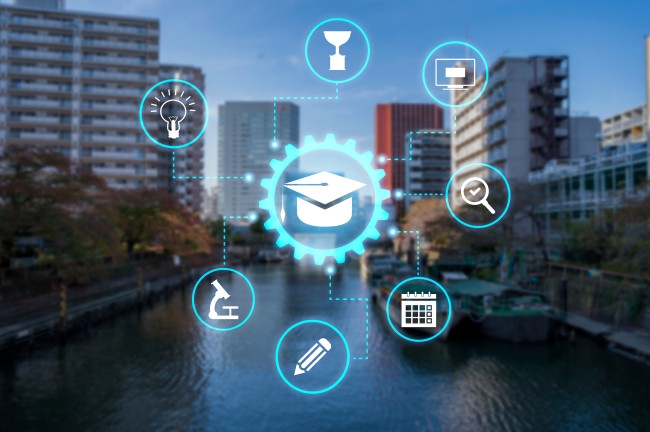
Technology has always made indelible impacts on various industries and institutions. But in recent years, we’ve witnessed massive improvements in emerging technologies and a widespread embrace of existing technologies. As such, technology has weaved its way through once-traditional industries like education.
Further, cultural trends in education are shifting, signalling changes toward student-focused learning models. Rather than the old “teach the test” and “synchronous pace” models that have long-bothered forward-thinking educators, we’re starting to see innovative approaches to education.
All this is to say: Education is changing. Fast. In this article, we will discuss what schools might look like in the next decade as technological and cultural changes continue to spread.
Online Education Will Continue Its Upward Ascent
Before the pandemic, online education was already beginning to take off. The pandemic merely catalyzed that take-off, offering millions of students a “trial run” in the possibilities and benefits of e-learning.
Now, schools are thriving, adding new courses and functionalities to their platforms and welcoming scores of new students.
It’s a safe bet to say that online education will continue its upward ascent. The benefits of online learning – its self-paced model (see below), multimedia elements, scheduling flexibility, accessibility, convenience, etc. – are too significant to ignore.
And a new generation of tech-fluent students will likely flock to digital classrooms to complete their high school education.
Self-Paced, Asynchronous Models
Online schools often operate what’s called a “self-paced” or “asynchronous” model. Essentially, students can move through a course as quickly or slowly as they need.
For instance, if a student struggles with calculus but excels at algebra, they can spend longer on the former unit and less time on the latter. (Contrast this with the standard classroom model, where every student learns at a strict, unvarying pace set by the teacher).
There’s some solid evidence to support that these student-focused models benefit everyone. They benefit so-called “gifted” students by allowing them a fast passage to a higher level; they also help slower students who require time to absorb and digest tough concepts.
Because of these wide-ranging advantages, expect to see more self-paced schools in the near future.
According to Statista, the online education market “is expected to show an annual growth rate (CAGR 2023-2027) of 9.48%,” an impressive indication of where things are headed in the next four years.
AI, Machine Learning and Big Data Analytics: Emerging Tech in the Classroom
ChatGPT is a hot-button topic in education right now. Some teachers and educational experts have come down firmly in the “against” camp, citing higher instances of cheating and plagiarism. But most educational experts see these AI tools for what they really are: tools.
More access to data, and faster analytical algorithms for understanding that data, can have a positive influence on education. AI/ML can pinpoint where courses need to be improved.
They can offer easier tutoring through chatbot technology. They can collate and organize information to make it more accessible. And they can even help teachers develop courses and grade papers.
AI/ML adoption probably won’t happen overnight in the education industry. But it’s feasible to believe they will make a splash sometime in the coming decade.
Virtual And Augmented Reality for Kinesthetic Learning
VR and AR are already gaining traction in post-secondary education, where cutting-edge faculties use them to teach everything from open-heart surgery to engine mechanics. They represent a practical, cost-effective and trouble-free way for students to “get their hands dirty,” so to speak.
It won’t be long before VR and AR find a home in grade school education. Research shows that many young learners benefit from kinesthetic study: experiencing a lesson rather than reading or hearing the information.
Augmented and Virtual realities are an inexpensive and safe way for schools to incorporate kinesthetic learning into their curricula.
Like AI/ML, we might be a few years away from seeing headsets in every school, but the shift is happening. Unsurprisingly, online schools are leading the charge.
Without a crystal ball, knowing exactly how education will change in ten years is challenging. But the points listed above are safe assumptions based on a) the current state of cutting-edge education and b) shifting attitudes toward learning.
Whatever ends up happening, two things are for sure: Education will continue to embrace new technologies and educational models, and students will be better off because of it.
